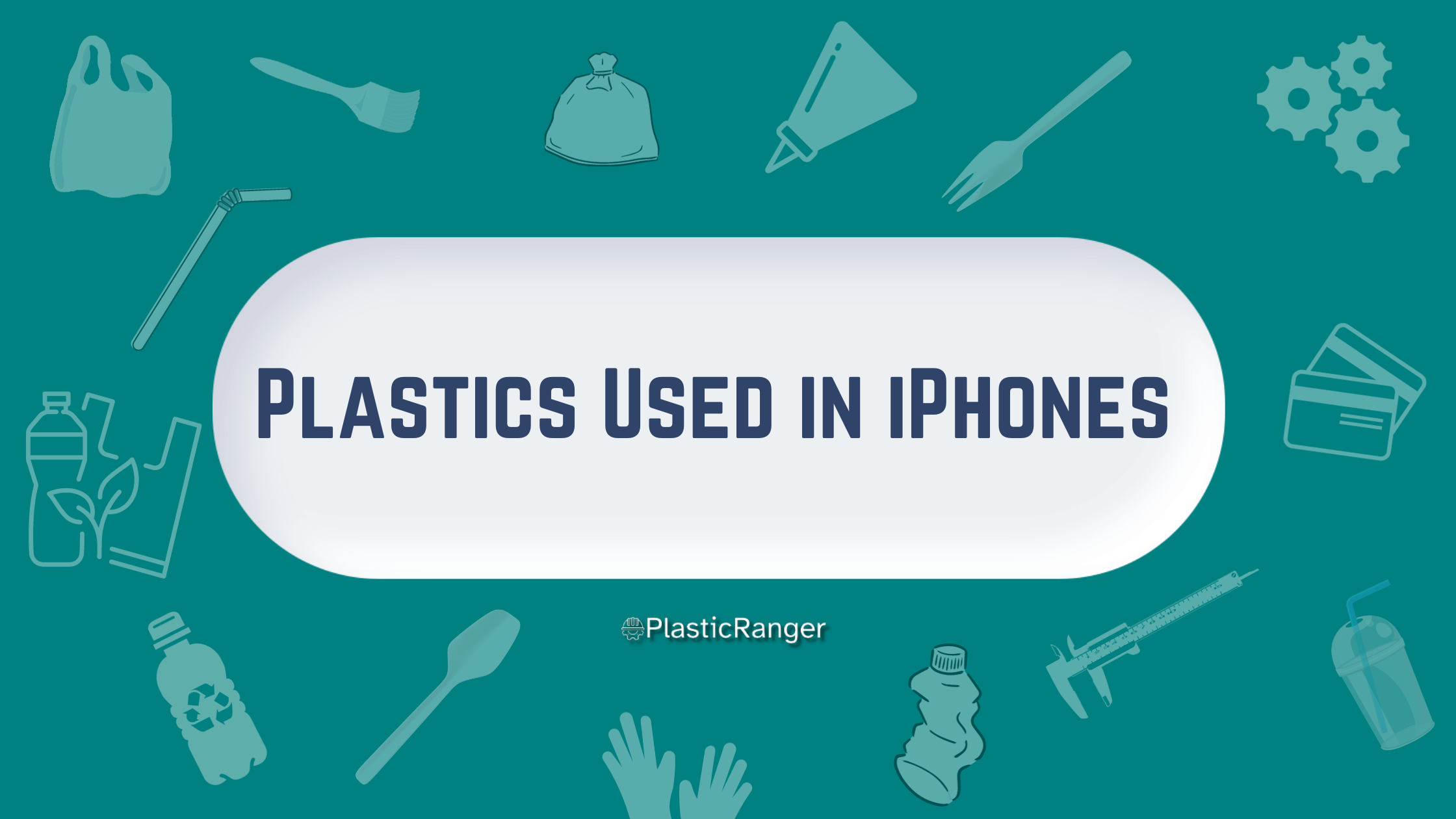In an era dominated by technology, where innovation is a staple rather than a luxury, the ubiquitous presence of smartphones, mainly iPhones, is a testament to human ingenuity.
While much attention is accorded to the prodigious leaps in processing power and software advancements, an unsung hero in this technological narrative is the diverse range of plastics that form the skeletal structure of these devices.
The following article explores the manifold aspects of plastics employed in creating iPhones – encompassing their evolution, properties, and the strides Apple Inc. has made toward sustainability.
Plastics in iPhones: A Nexus of Innovation and Sustainability

Evolution and Variety of Plastics in iPhones
When dissecting the anatomy of iPhones, one would notice that the voyage of plastics from crude oil derivatives to sophisticated polymers mirrors the journey of iPhones from their first generation to the present. Initially, iPhones used a considerable amount of plastic components.
For instance, the iPhone 3G and 3GS featured a plastic back case that diverged from the aluminum and glass combo introduced in the first iPhone.
In subsequent generations, Apple switched to premium materials such as glass and metal alloys for the external body but continued integrating plastics into internal components.
The interior of an iPhone is a labyrinthine network of interconnected parts, many of which are plastic-based components, like connectors, cables, and mounts. These parts are often fabricated using many plastics, including polycarbonate, HDPE, and polypropylene, all offering a blend of durability and lightness, promoting both form and function.
Plastics in iPhones: Manufacturing and Assembly
The manufacturing process of iPhones sees plastics playing significant roles. Plastics facilitate streamlined manufacturing, from protective films that shield sensitive components during assembly to the plastic trays that organize and transport parts along the assembly line, including injection molding.
Furthermore, plastics have found use in the form of adhesives, providing solid bonds between different materials while maintaining the sleek design that iPhones are renowned for.
These adhesives, essentially polymer resins, are capable of withstanding temperature fluctuations, hardness, mechanical stresses, and compressive strength, ensuring the longevity of the assembled product.
Performance Enhancement and Durability
In the pursuit of creating high-performance devices, plastics have emerged as indispensable materials. Their insulative properties make them essential to protect sensitive electronic parts from electrical interference.
Moreover, the lightweight nature of plastics contributes to iPhones’ slim and sleek design without compromising on strength. Furthermore, the plastic components housed within iPhones are engineered for resilience.
The iPhones can withstand daily wear and tear, impacts, and environmental stresses using advanced plastic polymers.
These physical properties accentuate the pursuit of durability, helping to extend the lifespan of the device, a critical factor in promoting sustainability.
Strides Towards Sustainability
Apple Inc. has embarked on a monumental journey toward achieving environmental sustainability in recent years. The use of plastics in iPhones is intertwined with this endeavor, as the company focuses on integrating recycled plastics into its products.
As part of its commitment to becoming carbon-neutral by 2030, Apple is experimenting with different forms of recycled plastics and biodegradable plastic like PLA, steering away from virgin plastics with a higher carbon footprint.
Furthermore, the company has been making strides in developing bio-based plastics derived from renewable resources like plant biomass.
These plastics are anticipated to have less environmental impact than traditional petroleum-based plastics. Beyond the product itself, Apple’s packaging initiatives have significantly reduced plastic use.
By transitioning to fiber-based packaging, the company has successfully minimized the amount of plastic waste generated from its product packaging.
Future Prospects: Towards a Plastic-Smart iPhone
Looking ahead, the trajectory of plastics in iPhones seems to be oriented towards sustainable innovation. Research and development initiatives aim to create plastics that fulfill functional requirements and align with environmental stewardship.
Apple’s collaboration with material science experts and environmental organizations fosters a research culture, aiming to unearth novel plastic materials with superior properties and lower ecological impact.
These collaborations envisage a future where plastics in iPhones contribute to enhanced performance and foster a circular economy where materials are reused and recycled, mitigating the environmental’s adverse impacts.
Moreover, Apple is continuously exploring opportunities to augment the recycling of plastics, incorporating them into new products, and fostering a circular lifecycle.
Through closed-loop supply chains and recycling programs, the company aims to redefine the role of plastics in the technology sector, transforming it from a symbol of environmental concern to a beacon of sustainable innovation.
Summary
The collaboration between iPhones and plastics showcases the potential of combining technology and material science. These plastics have evolved from basic materials to complex polymers, spearheading iPhone innovation and sustainability.
As sustainability becomes a necessary focus, the use of plastics in iPhones is experiencing a substantial shift. Guided by Apple Inc., this transition envisions plastics as catalysts for both technological progress and environmental conservation.
Transitioning from core components that enhance the iPhone’s durability to leading sustainable production efforts, plastics are embarking on a transformative path. The integration of plastics and technology is expected to forge new paths in innovation, harmonizing advanced technology with environmental responsibility.
Quick Navigation
